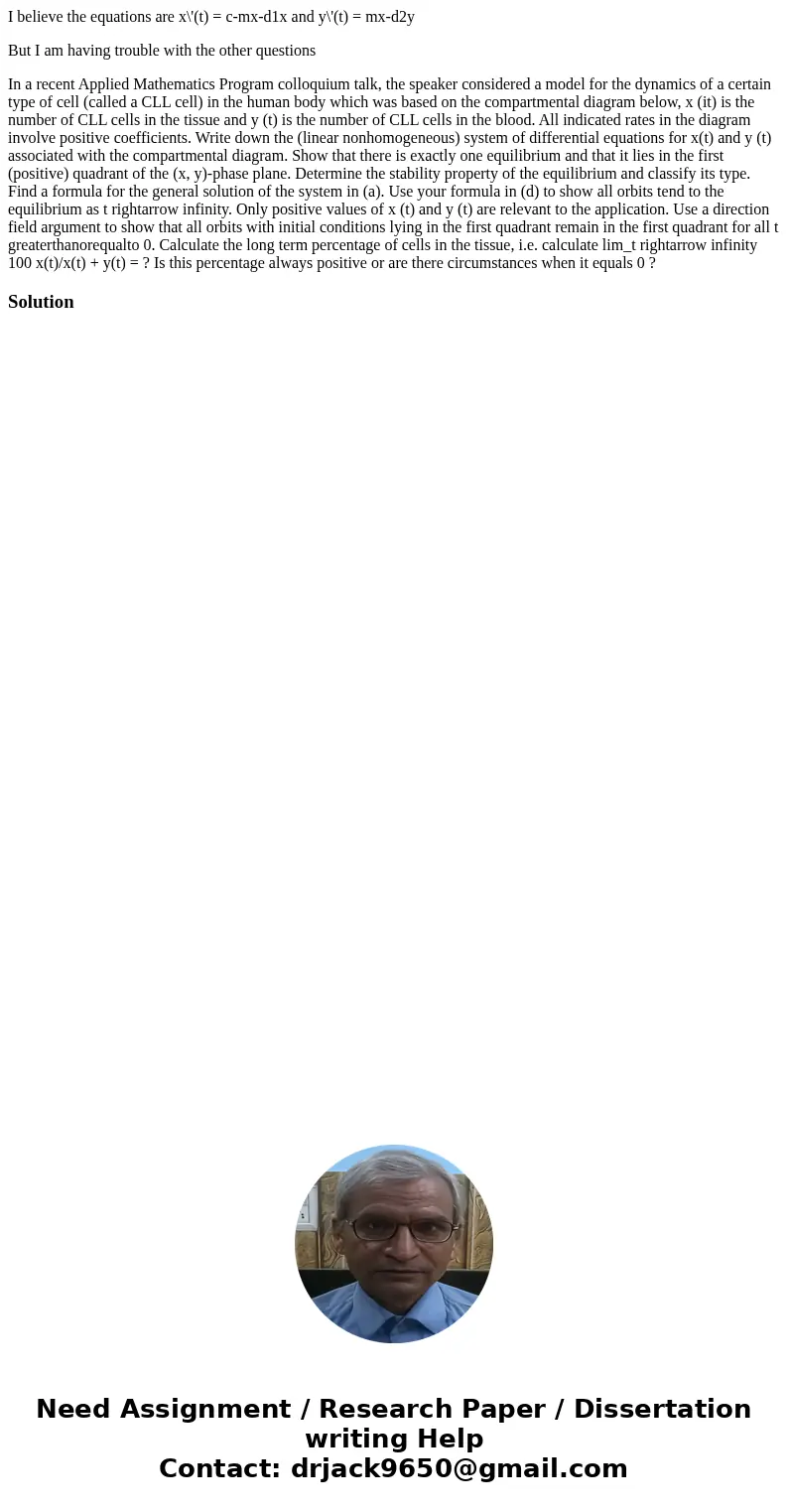I believe the equations are xt cmxd1x and yt mxd2y But I a
I believe the equations are x\'(t) = c-mx-d1x and y\'(t) = mx-d2y
But I am having trouble with the other questions
In a recent Applied Mathematics Program colloquium talk, the speaker considered a model for the dynamics of a certain type of cell (called a CLL cell) in the human body which was based on the compartmental diagram below, x (it) is the number of CLL cells in the tissue and y (t) is the number of CLL cells in the blood. All indicated rates in the diagram involve positive coefficients. Write down the (linear nonhomogeneous) system of differential equations for x(t) and y (t) associated with the compartmental diagram. Show that there is exactly one equilibrium and that it lies in the first (positive) quadrant of the (x, y)-phase plane. Determine the stability property of the equilibrium and classify its type. Find a formula for the general solution of the system in (a). Use your formula in (d) to show all orbits tend to the equilibrium as t rightarrow infinity. Only positive values of x (t) and y (t) are relevant to the application. Use a direction field argument to show that all orbits with initial conditions lying in the first quadrant remain in the first quadrant for all t greaterthanorequalto 0. Calculate the long term percentage of cells in the tissue, i.e. calculate lim_t rightarrow infinity 100 x(t)/x(t) + y(t) = ? Is this percentage always positive or are there circumstances when it equals 0 ?Solution

 Homework Sourse
Homework Sourse